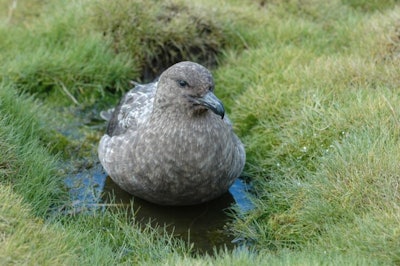
Highly pathogenic avian influenza (HPAI) has reached Antarctic region with an H5N1 variant of HPAI being discovered on Bird Island, South Georgia.
According to the British Antarctic Survey (BAS), the virus was confirmed in brown skua populations, following testing conducted by BAS staff and the U.K. Animal and Plant Health Agency. The tests were conducted after unexplained mortalities and several potentially symptomatic birds were discovered.
It is believed that HPAI reached South Georgia as birds returned there from their migration to South America, where the presence of HPAI has been confirmed in numerous countries. South Georgia is about parallel with the southern tip of South America, and it is approximately 870 miles east of the Falkland Islands. Bird Island is at the most northwestern point of South Georgia, which has a polar tundra climate.
BAS and Government of South Georgia & the South Sandwich Islands (GSGSSI) are working closely together to monitor and manage the outbreak.
BAS operates two research stations on South Georgia, including one at Bird Island. As result of the confirmed HPAI cases, most of the field work involving animal handling there has been suspended. Biosecurity measures continue, including the enhanced cleaning of clothing and field equipment, and observation of areas of high wildlife density.
Key elements of the wider science program at Bird Island continue under caution, including long-term monitoring of predatory marine birds, such as albatrosses, petrels and penguins.
View our continuing coverage of the global avian influenza situation.

















